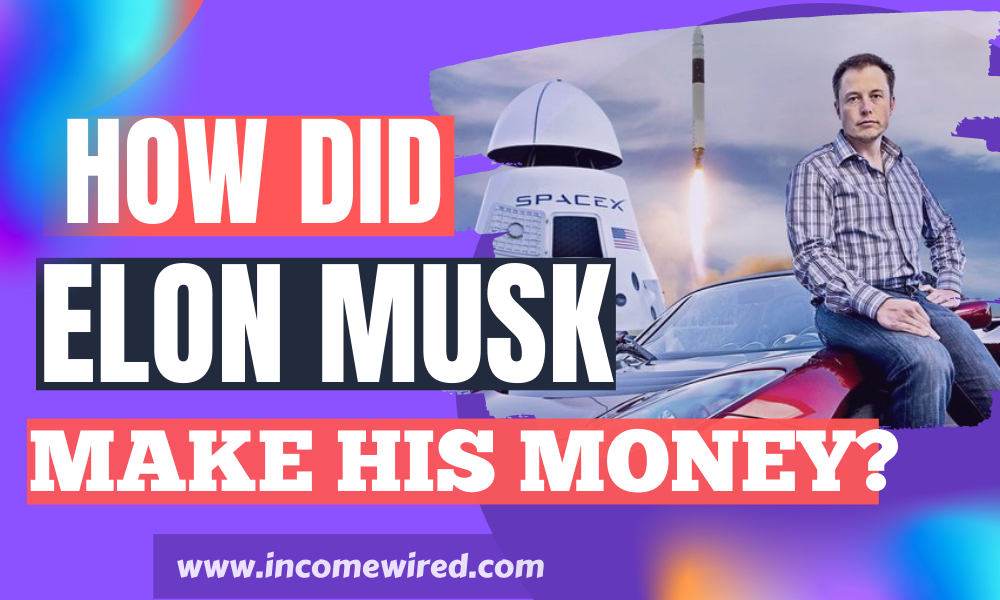we help service-based business owners, freelancers, and aspiring businesses with our content & services & When readers purchase services discussed on our site, we often earn affiliate commissions that support our work. Find out more about Income Wired
Elon Reeve Musk is the second wealthiest man after Bernard Arnault & family. At a net worth of $146 billion, his primary source of wealth is Tesla and SpaceX. In 2020, his wealth stood at $24 billion. He gained wealth massively from there, attaining an all-time high of $219 billion in 2022. Day in and day out, he keeps pushing forward, and he’s destined for greatness.
Musk doesn’t shy away from expressing his mind from firing Twitter employees to controversial talk shows. Most people know Elon musk from Tesla, Twitter, and SpaceX. However, his entrepreneurship and business success dates back to 20 years ago.
Elon musk is the founder of several successful businesses in America. As a business magnate and billionaire, he is actively involved in his businesses, either as the CEO or engineer.
Musk traces his roots back to South Africa, where he was born to a wealthy family. His wealth, however, isn’t linked to his family business, as he is a self-made billionaire. In his early years of success, he partnered with his brother Kimbal to co-found Zip2, a software company.
Later, he founded Space X in 2002 and invested in Tesla motors in 2004. Musk came into the limelight after successfully launching rockets into orbit and acquiring twitter in 2022.
You might be wondering, how did Elon musk make his money? Success is never an easy road, and Musk has almost faced bankruptcy on several occasions. Throughout the article, we will share how Musk made money through his companies and affiliates. Let’s dive in.
Zip2
Musk partnered with Kouri and his brother Kimbal in 1995 to found Zip2. The company dealt with maps, yellow pages, directions, and internet city guide software. Musk provided funding of $28,000 to kickstart the project.
Musk’s idea of starting the company was to enable computer users to find or access local businesses quickly. Ironically, few people owned computers then, which was an excellent future investment.
The company was located in a small office in Palo Alto, California. Musk worked tirelessly through the nights to code the website. The hard work and late nights finally paid off when the company won contracts with Chicago and the New York Times.
Musk and his partners lived in the office to keep the company running expenses low. Zip2 mainly convinced businesses to part with a particular amount for inclusion. The breakthrough came in 1996 when Mohr Davidow decided to invest $3 million and, in return, get majority shares.
Richard Sorkin replaced Musk as the CEO of the company. Musk made several attempts to become the CEO, but the board of directors thwarted them. He, however, retained his title as the chief technology officer and executive vice president.
After the Sorkin takeover, the company started allowing newspapers to create local directories, especially for online clients. Many newspapers, including the New york times, enjoyed their services, including an entertainment and art guide.
In 1998, Sorkin organized a merger with CitySearch, a company offering the same service. Musk did not welcome the decision, so he organized a revolt within the company. Somehow, his organized revolt was successful. Derek Proudian replaced Sorkin as the CEO.
In 1999, Compaq acquired Zip2 for a whopping $307 million. Zip2 was acquired to enhance the Compaq search engine AltaVista.Musk had a 7-percent share in the company and got a good share of the money ($22 million). Kimbal got around $15 million.
Zip2 was just the beginning and the stepping stone of Musk’s success. He would later open other successful companies, propelling him to multi-millionaire and later billionaire status.
X.com and PayPal
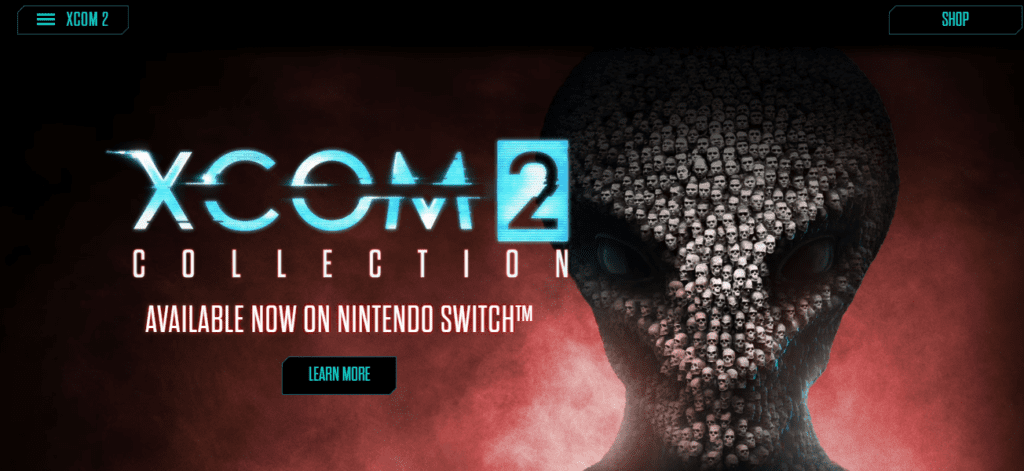

After the acquisition of ZIP2 by Compaq in 1999, Musk never wasted a single second; he Co-founded X.com in 1999 together with Christopher Payne, Ed Ho, and Harris Fricker. Just like Zip2, the company was based in Palo Alto, California.
The company dealt with e-mail payments and online financial services. X.com was the first online bank to be insured by FDIC (Federal Deposit Insurance Corporation). It faced massive success after its launch; more than 200,000 customers joined the online bank.
New companies rarely achieve such market dominance within a short period, and the reason for its massive success was because:
- There was a $20 reward for signing up
- Referring a new member earned you a $10
- Customers were not assessed for overdraft penalties
X.com had new, flexible, and advanced features at that time. Customers could complete account registration online, and sending money required you to enter a recipient’s e-mail address.
X.com investors weren’t convinced that Musk would run the company as the CEO; therefore, they replaced him with Bill harris towards the end of 1999.
Paypal
X.com merged with confinity, an online bank, in 2000. The main reason for the merger was quite simple, avoid stiff competition. PayPal, a money transfer service offered by confinity, was advanced and more popular than the X.coms service.
Still, in 2000, Musk was reinstated as the CEO. His leadership was controversial as he caused a rift in the company. For instance, he preferred Microsoft software to Unix software, and the decision wasn’t welcomed. The confinity founder Peter Thiel resigned, leaving the company in shambles due to a lack of a business model.
In September 2000, the board ousted Musk, and Thiel, the confinity co-founder, was crowned the new CEO. All the changes happened while Musk was enjoying a honeymoon trip in Australia. In 2001 the company was later renamed PayPal.
eBay bought PayPal in 2002 for a staggering $1.5 billion. Musk received over $170 million from his 11.72% shares in the company.
Later, in 2015, PayPal would be Spun off and become an independent enterprise. In 2017, PayPal sold the X.com domain to Musk. In an announcement made in 2022, Musk plans to create an X app.
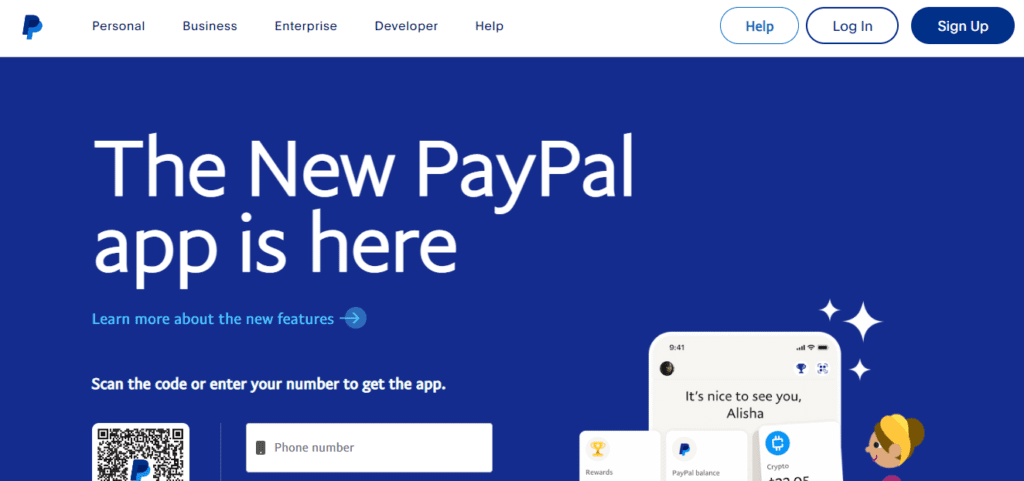

Musk proved to be talented in multitasking. While still in X.com and the merger with PayPal, he was still making big plans to set up other companies. The companies would later become phenomenal, improving space travel and regulating carbon emissions to the atmosphere.
SpaceX
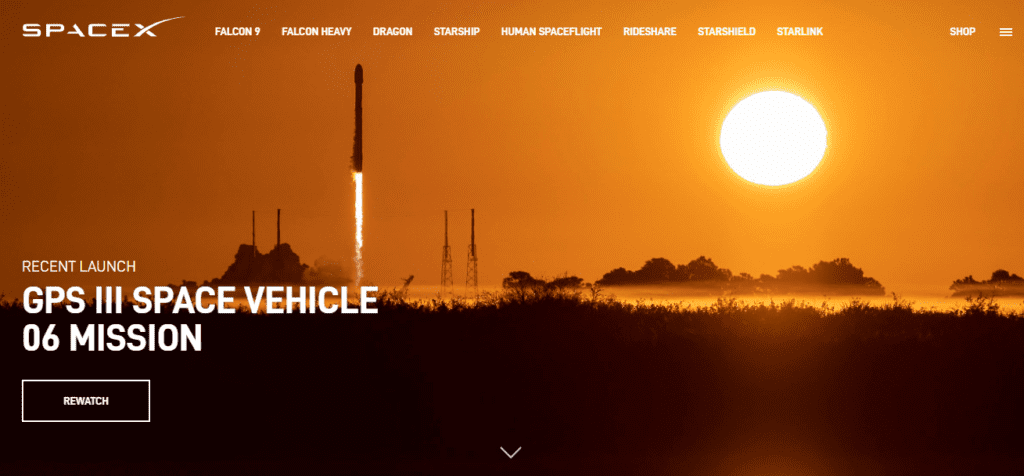

In 2002, Musk dreamed of colonizing mars and reducing the cost incurred in transporting supplies to space. He went ahead and founded SpaceX, a company specializing in the manufacture of space crafts such as:
- Falcon 9
- Falcon Heavy
- Starship launch vehicles
- Cargo dragon
- Rocket engines
- Crew Dragon spacecraft
- Starlink communication satellites
Musk had funding plans with the Mars Society in 2001 and discussed the possibility of colonizing Mars (Mars Oasis project) and growing plants in experimental greenhouses. Around October 2001, Musk, together with Adeo Ressi, and Jum Cantrell, visited Moscow with plans to purchase refurbished ICBMs (intercontinental ballistic missiles ) to aid in space travel.
The Moscow visit did not bear fruit, so he decided to try again in 2002. This round, he wanted three ICBMs. The group met with Kosmotras, but their price for one rocket was relatively high at $8 million. Musk rejected the offer and returned home.
After the frustrations in Moscow, Musk had plans to start a company specializing in building affordable and recyclable rockets. Before he could start his new space company, Musk approached Tom Mueller, a rocket engineer, to work for him. Mueller accepted the offer. In May 2002, Musk founded Space x and became the chief engineer and CEO.
When space x was still young, Musk interviewed and hired all new employees. Some of his early employees came from Boeing and TRW. One of SpaceX’s goals was to decrease the cost of space travel by recycling rockets.
Falcon 1
SpaceX developed Falcon 1 through internal funding (approximately $90 – $100 million) in 2005. In the same year, Musk announced that the company would pursue commercial space programs.
In 2006, SpaceX attempted to launch Falcon 1. The rocket failed to reach the earth’s orbit but was phenomenal for a new private company. NASA, under the (commercial orbital transportation services) COTS program, selected SpaceX to offer cargo resupply and flight crew to the ISS.
From 2006 to 2008, the three launches made resulted in failure. The losses almost ended SpaceX, and Musk was stressed and on the verge of bankruptcy. The big break came in September 2008 when the company made its fourth launch, and Falcon 1 made it to orbit.
Musk had $30 million remaining and split the money between SpaceX and Tesla. In December 2008, NASA awarded SpaceX the CRS (commercial resupply services) contract worth $1.6 billion. Musk also received funding from Mathew Brown companies and T. Boone Pickens Jr, which revived the company further.
Falcon 1 retired in 2009 after the second successful launch. The retirement of the first rocket allowed the company to focus on developing larger orbital rockets.
Falcon 9
In June 2010, Falcon 9 made its first launch attempt. The launch was successful. The second launch was scheduled in December 2010, and after two orbits, it safely returned to earth. SpaceX was now stable, and the production line was a beehive of activities. For every three months, the company manufactured one falcon and one dragon.
In April 2011, NASA issued SpaceX with a $75 million contract to develop (launch escape system) LES for the dragon module. In August 2012, NASA issued SpaceX with a fixed-price SAA (space act agreement). Under the agreement, SpaceX was to develop a crew transportation system that is detailed.
By 2012, Musk owned around two-thirds of total SpaceX stocks. The 70 million shares of the company were valued at approximately $875 million. SpaceX was valued at $1.3 billion.
In May 2012, Dragon C2+ delivered cargo to the ISS (the first commercial spacecraft to achieve such a feat). After the flight, SpaceX’s private equity was valued at $ 2.4 billion (almost double)
From 2013 to 2015, SpaceX experienced rapid growth. In 2013, the company launched the first-ever commercial mission for a non-government customer. SpaceX won nine contracts in 2014.
In September 2014, SpaceX got another contract from NASA, CCtCap (commercial crew transportation capability). The contract was meant to finalize the crew transportation system and included the following technical and certification milestones:
- Uncrewed flight test
- Crewed flight test
- Six operational missions
In early 2015, SpaceX got $1 billion in funding from Fidelity and Google. The company’s value was approximately $ 12 billion. SpaceX further announced that they would develop Starlink, a new satellite constellation to provide internet service.
In June 2015, Falcon 9 encountered its first failure. While on the seventh resupply mission to the ISS, the CRS-7 exploded. A steel strut that holds the helium pressure vessel broke free, causing the failure.
In December 2015, SpaceX achieved the first successful landing using Falcon 9 Flight 20. After a successful landing in 2016, the company offered a 10% to customers who chose to transport their payload aboard a re-used Falcon 9.
SpaceX raised $350 million in July 2017, which saw the company’s value rise to $21 billion. Still, in the same year, the company achieved a great global market share (45%) for contracts awarded.
The Boring Company
Musk does a great job of multitasking. SpaceX formed a subsidiary in 2017, The Boring Company. It began constructing a short tunnel that opened in December 2018 to the general public.
The Boring Company became a separate corporate entity in 2018. The company’s equity was divided among SpaceX (6%), Elon Musk (remainder of the equity), and early employees (less than 10%)
SpaceX had achieved more than 100 launches by March 2018, raising approximately $12 billion in contract revenue. The contracts included government and commercial customers. By this time, SpaceX was leading as the global commercial launch provider,
Initiate a plan for Starlink and Starship project
In Early 2019, SpaceX had plans to start Starlink and Starship projects. The projects would come at a higher price because 10% of the workforce would be laid off. The first batch of Starlink satellites (60 of them) was launched in May 2019.
SpaceX raised $1.3 billion across three funding rounds to actualize the Starlink project. SpaceX’s value stood at $33 billion in 2019 and further rose to $36 billion in 2020.
With great sacrifice comes great reward. In 2020, during the crew dragon demo-2, SpaceX launched two astronauts from NASA (Bob Behnken and Doug Hurley) aboard a crew dragon. It became the first ever private-owned company to send a crew to the ISS.
SpaceX did a $1.9 billion fundraising, and the company’s value rose to $46 billion. In February 2021, SpaceX raised $1.6 billion in equity through 99 investors, raising the company’s value to $74 billion.
Most of the capital raised was meant to support Starship and Starlink projects. By October 2021, the value of SpaceX had risen to $100 billion. SpaceX entered into agreements with Microsoft Azure and Google Cloud Platform to provide networking and computer services for Starlink.
Another round of financing pushed the company’s value to $127 billion in 2022
So far, SpaceX has made the following achievements:
- The first company to recover a spacecraft
- The first private-owned company to launch a successful rocket into orbit
- The first private-owned company to manufacture a liquid-propellant rocket that can reach orbit.
- The first private-owned company to launch and land a rocket more than a hundred times
- The first private-owned company to dock at the ISS (International Space Station)
- The first company to try vertical propulsive landing of a rocket booster and succeed
- The first private-owned company to send astronauts to the ISS and the orbit
- The first company to re-use rocket boosters
Starlink
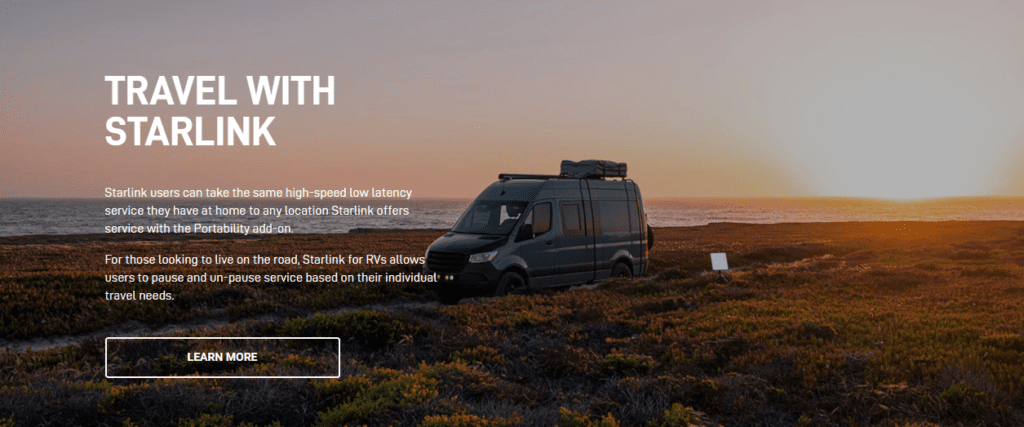

Musk began the development of Starlink through SpaceX in 2015. In February 2018, he launched the first prototype satellites, and the second set was launched in 2019. The project cost a whopping $10 billion.
The starlink satellite was used in the russia-ukraine invasion to provide communication and internet access to the people of Ukraine. By October 2022, Musk had donated 20,000 satellite terminals to the people of Ukraine. The donation cost SpaceX $80 million and is estimated to cost $400 million annually.
An evaluation done by Morgan Stanley bank estimates the value of Starlink to be $81 billion. Starlink is becoming popular, with more than one million subscribers as of December 2022.
Tesla
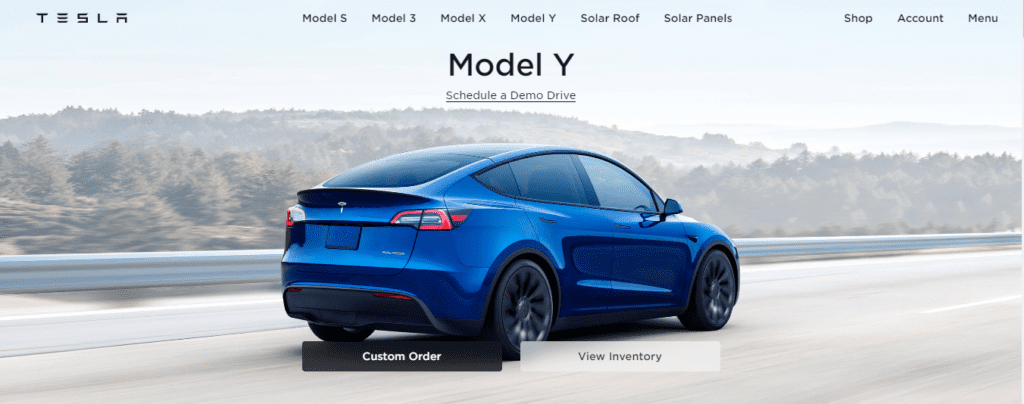

Marc Terpening and Martin Eberhard incorporated Tesla motors in 2003. The name was coined as a tribute to Nikola Tesla, a renowned electrical engineer, and inventor. The two men played a significant role in the company’s development through a series of funding. Musk came in and invested $6.5 million in February 2004.
After the investment, Musk became the majority shareholder and Tesla’s chairman. He oversaw the production design of the Roadster, although he wasn’t actively involved in the operations of Tesla.
Eberhard was ousted during the 2008 financial crisis, and Musk became the product architect and CEO of Tesla. A 2009 lawsuit settlement agreed that the five men (Terpening, Eberhard, Wright, Straubel, and Musk) would be referred to as co-founders.
Musk led a Venture capital funding of around $13 million in February 2006. In May 2006, he co-led another round of funding from prominent entrepreneurs such as Jeff, Skoll-former eBay president and google co-founders (Larry Page and Sergey Brin). The round raised $40 million.
In May 2007, Musk led the fourth round of funding of $45 million. The total investment from private investors was over $100 million. Tesla unveiled its first car, Roadster, in Santa Monica, California, on July 2006.
By early 2009, Tesla had achieved the following:
- Delivered 147 cars
- Raised $187 million ($70 million was from Musk)
In June 2009, the United States Department of Energy approved a $465 million loan to Tesla to support its operations. In May 2013, Tesla repaid the loan plus the $12 million interest.
The production of the Roadster stopped in 2012, allowing the company to launch Model S Tesla. The car achieved enormous sales volumes becoming the bestselling electric car around the globe in 2015 and 2016.
Tesla unveiled Model X in 2015 and received 25,000 pre-orders after its launch. In the same year, the company unveiled Tesla Powerpack and Powerwall battery packs and got $800 million worth of orders just one week after the launch.
Tesla acquired SolarCity in November 2016 for a whopping $2.6 billion. The company later changed its name from Tesla Motors to Tesla Inc in February 2017. The move was meant to reflect on the expanding business, which included:
- Battery energy storage systems
- Solar power generation
- Electric vehicles.
The company has had success in revolutionizing the transport industry through electric cars. As of January 2023, Tesla is estimated to be worth around $386 billion.
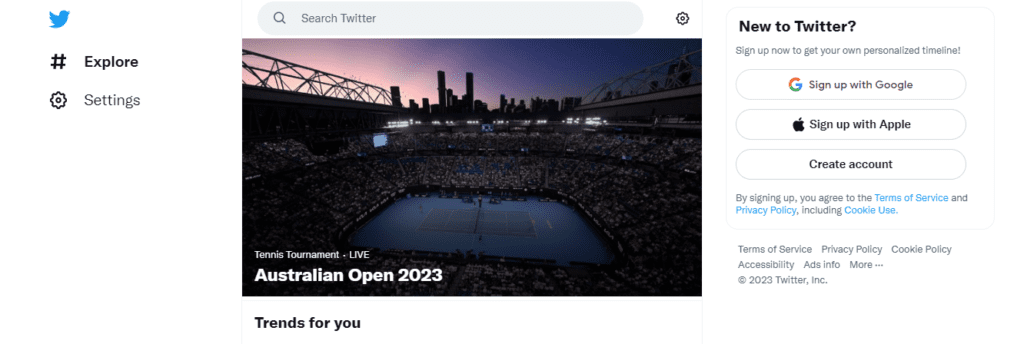

Twitter is different from all other assets owned by Elon Musk. He didn’t raise the company from its funding or growth stages. He acquired it when it was at its optimum performance.
Twitter is located in San Francisco, California, and was founded in 2006 by the following people:
- Jack Dorsey
- Christopher Isaac Stone
- Noah E. Glass
- Evan Williams
- Jeremy LaTrasse
In 2017, Musk expressed his interest in acquiring the platform. Musk started purchasing the shares in early 2022, and by April of the same year, he had acquired 9.2% stakes and became the largest shareholder.
On April 13, 2022, Musk proposed to buy Twitter at $43 billion and take over 100% of the company’s stock. The Twitter board wasn’t pleased with the idea, and they adopted a “poison pill,” a plan that would make it extremely expensive for a single investor to purchase over 15% of the company.
Musk had concluded his bid to acquire Twitter at $44 billion by the end of April. You would wonder where he would get $44 billion. First, he got a $12.5 billion loan with Tesla stocks as the security. Secondly, he got $21 billion through equity financing.
On October 27, 2022, Musk officially sealed the deal, acquiring Twitter at the agreed amount of $44 billion. In 2022, Twitter had revenue of $5.1 billion, surpassing the previous year’s $3.7 billion profit.
Conclusion
Elon Musk has proved that hard work and consistency pay. Forbes ranks him as the second wealthiest man, and he has a culture of working long hours to achieve his goals. Throughout his career, he has successfully managed multi-tasking by running successful companies simultaneously.
Success takes work, and Musk keeps improving every day. He plans human expeditions to the moon, something the human race has never witnessed. Electric vehicles are making positive progress when it comes to preserving our planet.

